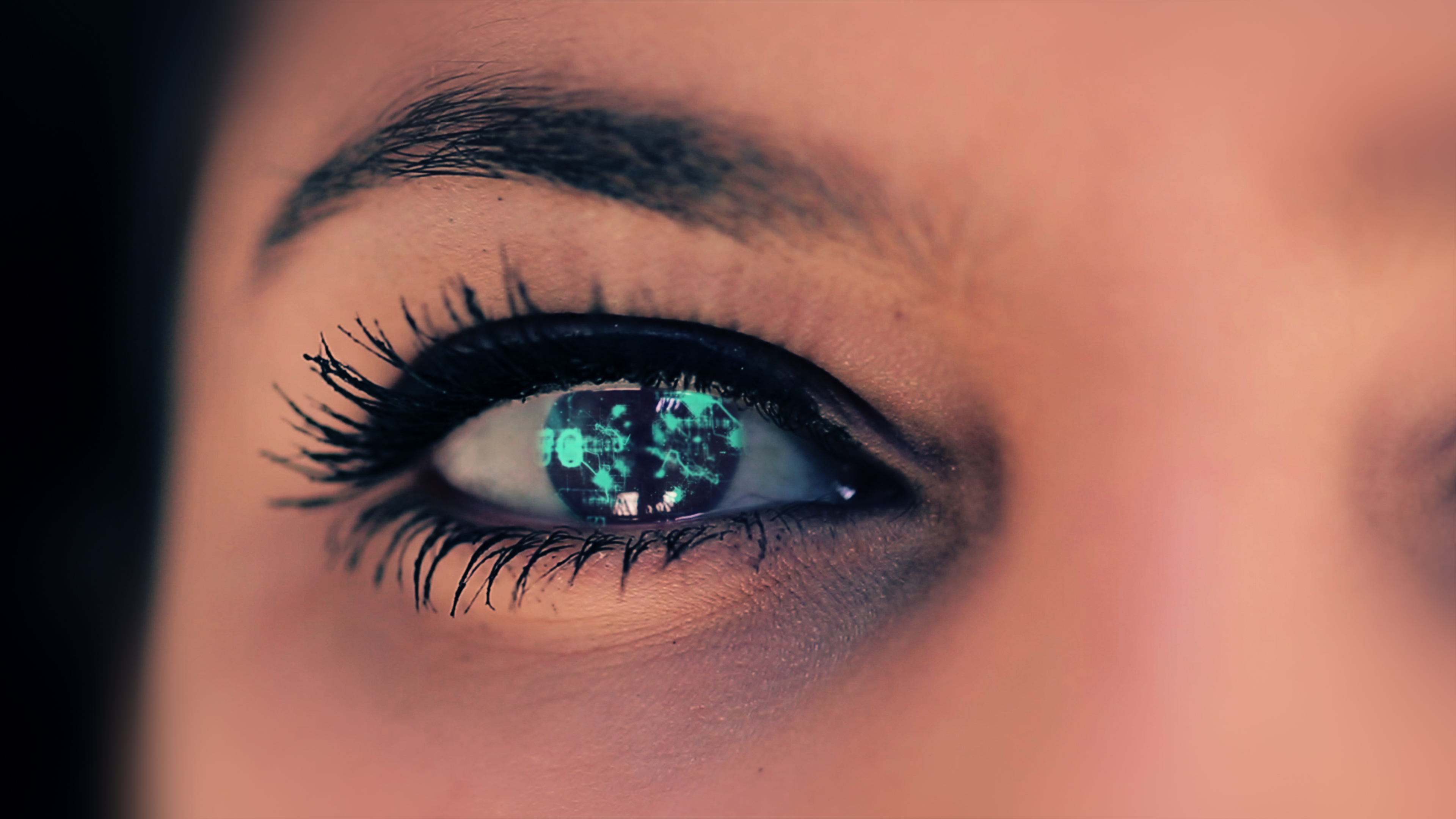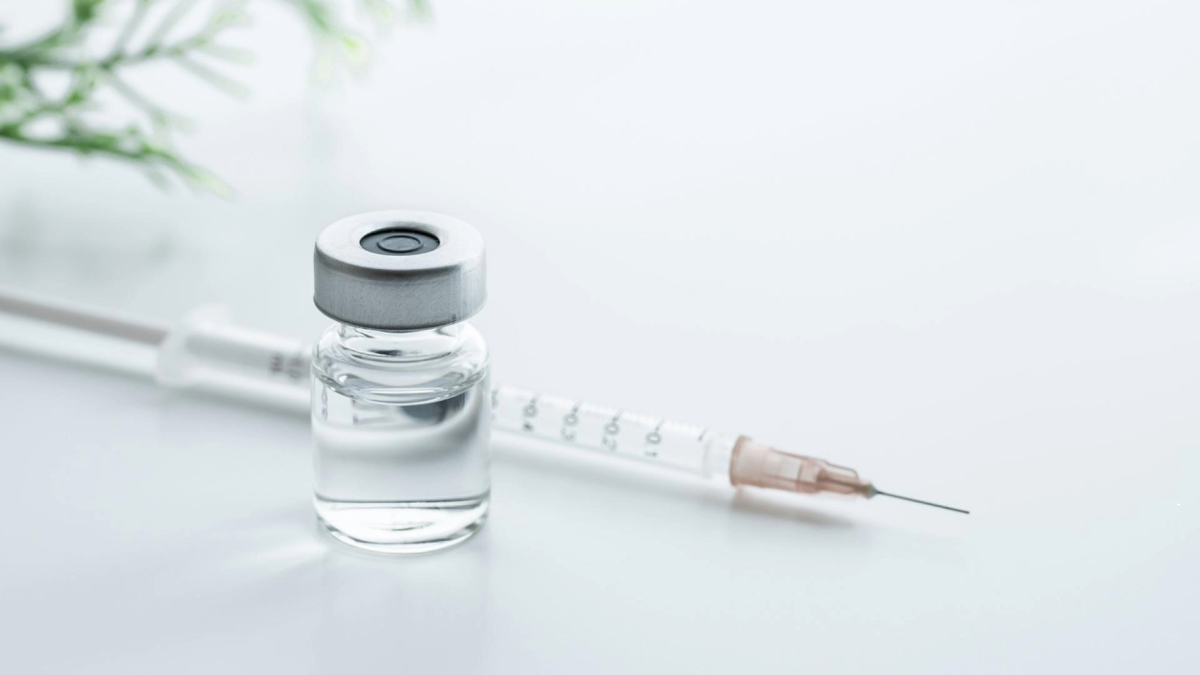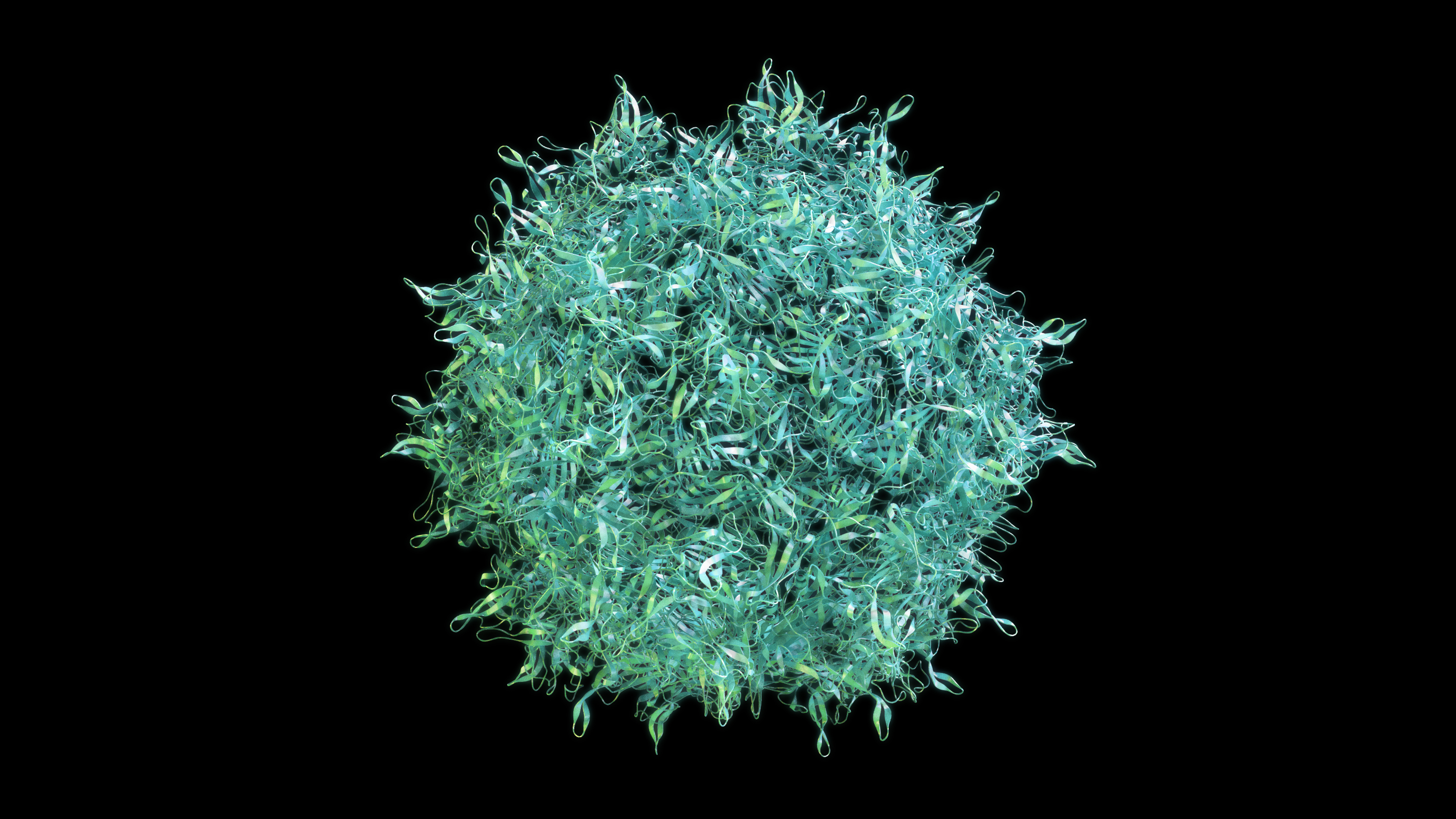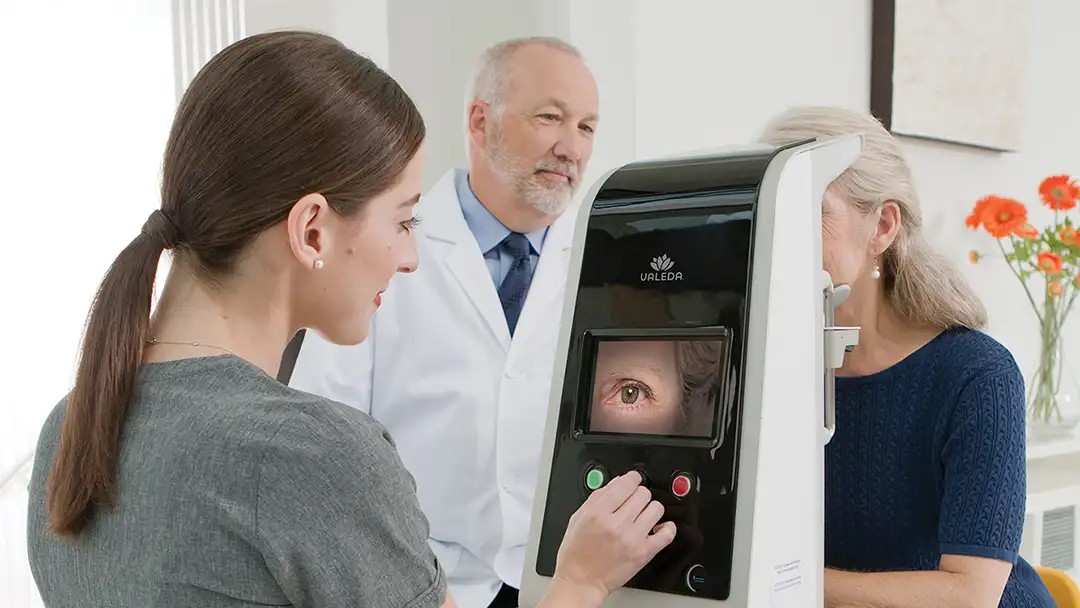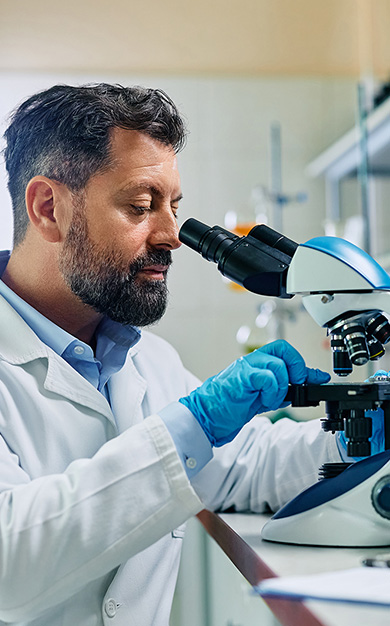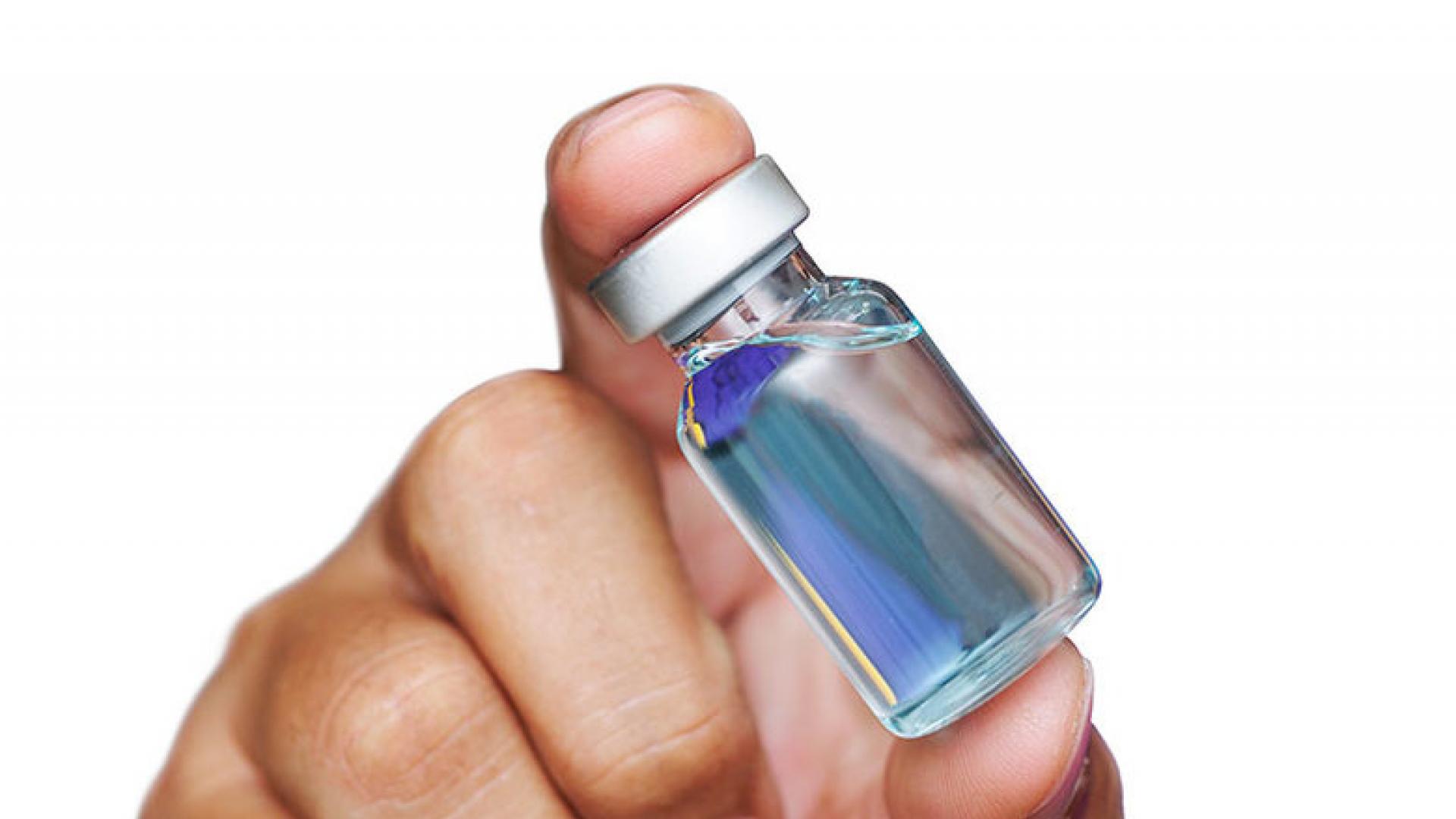
Learn what anti-VEGF treatments are and how they are used to manage the wet form of age-related macular degeneration.
People with wet AMD can lose central vision from abnormal blood vessels that grow into the retina. These vessels leak fluid into the retina, causing it to become “wet.” In the short term, this causes painless, reversible distortion or gray-appearing areas in the central vision. If untreated, within few days to weeks, the retina is permanently damaged by the abnormal vessels, fluid, and associated scar tissue, and loss of central vision becomes permanent.
Treatment for Wet AMD
Fortunately, years of intensive research revealed that the retinas of some people with AMD secrete too much of a protein called vascular endothelial growth factor (VEGF), causing the growth and leakage of the blood vessels. This process can be slowed or stopped by injecting drugs into the eye that bind and inhibit VEGF.
Currently, six drugs are used to treat wet AMD: brolucizumab (Beovu®), aflibercept (Eylea®), ranibizumab (Lucentis®), faricimab-svoa (VABYSMO®), and ranibizumab injection for intravitreal use via ocular implant (SUSVIMOTM)*. There is also a seventh drug, called Avastin® (bevacizumab), approved by the FDA as a blood vessel growth inhibitor to treat colorectal and other cancers, that has been used off-label (i.e., for purposes other than the approved uses) by some doctors to treat AMD.
For most people, they need to be injected into the eye every four to twelve weeks, with the frequency depending on each person’s response. So far, clinical trials have shown that Vabysmo can last the longest, up to four months between injections in some patients. The response is measured using an optical coherence tomography retinal imager, which generates a picture of the retina in less than a minute showing the amount of fluid in the retina.
Each of these drugs can reduce or eliminate the fluid in most people. Avastin is the least expensive, because it is purchased in bulk for “off-label” use, but was shown to have similar efficacy and safety compared to Lucentis in a large clinical trial sponsored by the National Institutes of Health (NIH) and coordinated by the University of Pennsylvania, called the “CATT” trial.
The port delivery system (PDS) is a device implanted into the wall of the eye in the operating room that can store, and slowly release, Lucentis. This device is refilled in the office once every six months. It can result in fewer office visits and treatments.
The Eye Injection
While the concept of having a drug injected into the eye sounds awful, most people find that it’s not as bad as they originally thought. Numbing medicine is put on the eye, which is carefully cleaned before the injection. The injection itself takes only a few seconds. Many people will feel some eye irritation for about a day, mainly caused by the iodine that’s used to sterilize the eye. The use of iodine is important to decrease the risk of infection. The injections have a good safety record, with a 1 in 1000 chance of infection or retinal detachment. Either of these complications needs to be treated immediately. Infection usually causes severe eye pain and can be treated by injecting antibiotics into the eye. Retinal detachment causes a few seconds of flashing lights in the peripheral vision followed by new “floaters” and then a “curtain” blocking part of the visual field. It requires surgery to re-attach the retina.
New Treatments on the Horizon for Wet AMD
RGX-314 is an anti-VEGF treatment delivered by gene therapy. It has the potential to block VEGF for years following a surgical procedure in which a harmless virus, called adeno-associated virus (AAV), carrying the anti-VEGF gene, is injected under the retina. ADVM-022 is another anti-VEGF gene therapy that can be injected into the vitreous in an office procedure, but it can cause inflammation in the eye. RGX-314 is now in phase III (final phase) clinical trials. This approach is more promising now that retinal AAV gene therapy has been approved by the FDA for another disease called Leber’s congenital amaurosis. Results from early clinical trials look promising for safety and efficacy.
Summary
As research to develop more effective and longer lasting treatments for wet AMD continues, comfort during treatment and vision protection should improve.
* As of Oct. 24, 2022, this product is currently under voluntary recall due to a manufacturing problem with the device
About BrightFocus Foundation
BrightFocus Foundation is a premier global nonprofit funder of research to defeat Alzheimer’s, macular degeneration, and glaucoma. Since its inception more than 50 years ago, BrightFocus and its flagship research programs—Alzheimer’s Disease Research, Macular Degeneration Research, and National Glaucoma Research—has awarded more than $300 million in research grants to scientists around the world, catalyzing thousands of scientific breakthroughs, life-enhancing treatments, and diagnostic tools. We also share the latest research findings, expert information, and resources to empower the millions impacted by these devastating diseases. Learn more at brightfocus.org.
Disclaimer: The information provided here is a public service of BrightFocus Foundation and is not intended to constitute medical advice. Please consult your physician for personalized medical, dietary, and/or exercise advice. Any medications or supplements should only be taken under medical supervision. BrightFocus Foundation does not endorse any medical products or therapies.
- Treatments
- Wet AMD




